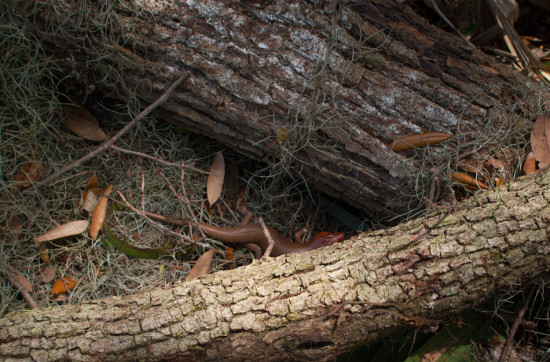I haven’t captured the flowers, fruits, or seeds yet, but Spartina alterniflora is the other dominant plant species in the salt marshes around Coastal Georgia.
I haven’t captured the flowers, fruits, or seeds yet, but Spartina alterniflora is the other dominant plant species in the salt marshes around Coastal Georgia.
Flowers, fruits, and vegetative characteristics of wild sage Lantana camara.
While the florescence here only displays orange and dark orange or red, flower color varies widely in a single florescence, and changes in individual flowers once pollinated. The change in color signals to pollinators that a flower is no longer producing nectar, and, since the function of flowers, including their nectar production, is to attract animal pollinators to move pollen around, pollinated flowers tend to halt nectar production once pollinated. It does seem odd that a plant would communicate to pollinators as promptly (color change can occur within minutes) and directly as occurs here, given that the flower ‘has what it needs’. The hypothesis explaining this claims conservation of pollinator energy, presumably allowing improved visitation efficiency, which must benefit the host plant. Why not keep the pollinator guessing a little, especially in monoecious flowers where pollen could still move away from the host? (I don’t know if Lantana is monoecious – that is, has both male and female parts in the same flower)
Visible flower color change after pollination occurs in other plants too, and there are likely other changes that are not quite as striking to us, non-pollinating, humans, but are evident to pollinators.
The Marsh Periwinkle Litoraria irrorata has been well-studied and is a conspicuous, dominant-player in the ecology of salt marshes along the East Coast of the United States. I took these photographs to prepare for a mark-recapture exercise that my Coastal Ecology course performed. Unfortunately, I couldn’t attend the exercise, and it was run by my department chair, who is co-teaching the course with me. From the images the students captured, and have posted, the activity seemed productive and fun.
While looking for herps under logs, I often encounter these carabid ground beetles poking their heads from hiding places.
Eva has lost a bit of weight since coming home with Allison and I in January 2013.
 A broadhead skink Plestiodon laticeps that was a bit too fast for me. This specimen was fairly large, probably approaching the maximum in the normal size range for this species at about 30 cm in total length. I found this specimen at Skidaway.
A broadhead skink Plestiodon laticeps that was a bit too fast for me. This specimen was fairly large, probably approaching the maximum in the normal size range for this species at about 30 cm in total length. I found this specimen at Skidaway.